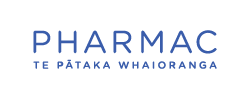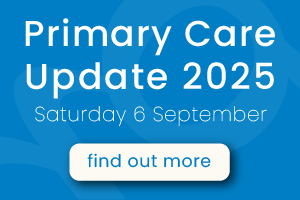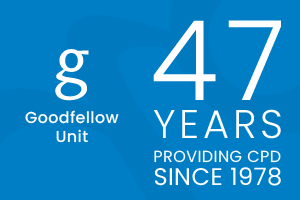
This MedCase was first published in February 2019. It was updated by Dr Hazel Fuiava, MBChB, Dip Paeds, FRNZCGP.
Type 2 diabetes is at least twice as common among Pacific people and typically occurs 10 years earlier than in the overall New Zealand population. Pacific people have higher rates of mortality and complications; life expectancy is approximately 5 years shorter for Pacific people, mainly due to diabetes and its complications.
This Medcase discusses rapid escalation of treatment for poorly controlled type 2 diabetes, highlighting ideas to improve outcomes for Pacific patients.
Mr M is a 44 year old Samoan man who arrives 20 minutes late to his Saturday morning appointment. Your nurse asks if you can fit him in, as she has been trying unsuccessfully to contact him about his HbA1c, which was 104 mmol/mol at the last check 6 months ago.
Mr M was diagnosed with type 2 diabetes 5 years ago with an HbA1c of 72 mmol/mol. He has since been seen irregularly by multiple GPs. Despite advice about diet and exercise, his HbA1c continued to increase, and two years ago, he was prescribed Galvumet (vildagliptin/metformin) 50mg/1000mg twice daily.
However, repeat prescriptions have been irregular and the most recent one was 6 months ago. At that visit, his weight was 134kg (height 180cm, BMI 41), blood pressure was 154/94mmHg. What do you do next?
The Pacific patient paradox: Poorer outcomes for those most in need
The case of Mr M is not unusual and there are multiple reasons for poor outcomes. Pacific patients are over-represented on various indices associated with poor health (low socioeconomic status, overcrowded housing, exposure to smoking and poor nutrition) but disparities persist even when these factors are removed. The health system can present substantial barriers to care. Patients report difficulties accessing clinics, clashes with other appointments or work, seeing too many doctors/clinics, language barriers and lack of interpreters. Cultural misunderstanding and unconscious bias can inhibit connections with Pacific patients, leading to racial discrimination and poor health outcomes.
Patient voices: Comments from patients who did not attend diabetes satellite clinics in Auckland:
"I am taking too many tablets but I did not feel that my condition is changing."
"My blood sugar was not very good but I could not afford to go to my GP to get the prescription…I had to go to work…I couldn’t take more leave. (Then) one day I got really unwell and had to go to ED. I was told that my kidney was failing and now I am on dialysis machine…My family is also suffering because I can no longer work full-time."
How can practitioners offer Pacific patients better care?
There is no one-size-fits-all approach to caring for Pacific patients. However, delivery of care in a culturally appropriate manner is important. Consider the following themes:
- Rapport. Trusting, respectful relationships are important, allowing patients to better understand their condition and the aims of investigations and treatments.
- Continuity. Many patients like Mr M receive fragmented care for acute problems only. Ask the patient how to ensure regular follow-up; consider longer appointments with a trusted clinician, phone reviews, or funding to reduce GP or pharmacy costs.
- Holistic good health. For many Pacific patients, good health means being able to fully contribute to their family and community. Understand what is important to the patient and how treatments fit with their priorities. Offer self-management tools.
- Respect. Showing respect for those of higher social status is important. This can inhibit the sharing of personal or embarrassing information with the doctor. For example, patients may not reveal to the doctor that they are unable to afford the prescription cost.
- Dignity. A concern for dignity may outweigh concerns about health. Ask what is important to the patient and what treatments they wish to accept.
Back to Mr M: What do you do now?
Visit 1: Build rapport, re-establish treatment and arrange regular reviews
Mr M apologises for arriving late. He tells you he works night shifts and finished late today. On examination, he weighs 140kg, and his blood pressure is 158/90mmHg. His cardiorespiratory and foot examinations are normal. You move on to discussing management, focusing on:
- The high risk of diabetes complications if HbA1c remains high. Mr M tells you his father used insulin but needed dialysis and bilateral foot amputations anyway. You spend some time discussing how effective treatments can prevent such outcomes and the importance of gaining control over diabetes quickly by using lifestyle changes, multiple oral medications and, eventually, insulin. You agree on an initial target HbA1c of <80 mmol/mol. (NOTE: you plan to reduce this over time but aim for a motivational target at the first visit).
- Weight loss. You explain how significant weight loss can reverse type 2 diabetes. Mr M tells you he is drinking 2L of Coke to stay awake during his night shifts. He agrees to switch to zero-sugar Coke instead and to look for other ways to limit his sugar intake. You also offer a referral to Green Prescription, which he declines due to his incompatible work schedule. However, he plans to work out with weights in his garage three times per week and to return for regular weight checks every month. You also raise the idea of bariatric surgery and agree to discuss this further after trying diet and exercise.
- Medications. Mr M has stopped taking his current tablets but is willing to restart. You want to escalate treatment quickly given the high HbA1c, so you add a dose of empagliflozin 10mg once daily, after counselling him about starting empagliflozin. You also restart losartan 50mg daily and ask Mr M to have a blood test in two weeks (renal function, ACR, LFTs and cholesterol for CVD risk assessment).
- Regular reviews. You ask Mr M how you can see him regularly and he suggests later on Saturday mornings work best. You offer discounted visits (using your PHO’s flexible funding budget) and book a 30-minute review with you in two weeks. You also arrange for your nurse to call him next week to check in.
Escalating treatment quickly is important and helps keep patients motivated. Consider combination therapies where possible to reduce the pill burden; it usually requires more than one antihyperglycaemic or antihypertensive agent to achieve targets.
Visit 2: Titrate medications, start blood glucose monitoring, CVD risk assessment and blood pressure control
Mr M brings his wife to this appointment and you spend a few minutes getting to know her. She does the family food shopping and cooking and you discuss healthy eating for the family. Next, you review the blood test results with the following actions:
- HbA1c 88 mmol/mol. Mr M is tolerating empagliflozin well and is pleased to see a drop in HbA1c, however, you need to keep reducing HbA1c so agree to increase the empagliflozin to 25mg once daily. You explain that this will likely reduce the HbA1c further, but not enough to reach the new target of <68mmol/ml. You ask him to start regular blood glucose testing at home in preparation for starting insulin and prescribe a testing meter. You book him a review with the nurse tomorrow to learn about target blood glucose levels and how to use the meter.
- eGFR 60 mL/min and ACR 3.5 mg/mol. You complete a cardiovascular disease risk assessment which shows a 5-year risk of >15%. You discuss the significance of microalbuminuria on the kidneys and blood vessels and agree on a target blood pressure of <130/80 mmHg. Today’s blood pressure is 152/90 mmHg. Mr M is tolerating losartan well and you explain the need to increase therapy. Mr M is reluctant to take another pill, so you offer the combination losartan/hydrochlorothiazide 50mg/12.5mg after first discussing the risks of taking NSAIDs while on this medication and recommending he avoids them. You also ask him to monitor for symptoms of gout and arrange a repeat blood test in two weeks to check renal function.
- Total cholesterol 6.2 mmol/L and HDL 0.7 mmol/L. You discuss how exercise can increase HDL and suggest a statin for hyperlipidaemia. However, Mr M declines as he doesn’t want any more tablets so you defer this for now.
- Weight 138kg. Mr M is doing well with his diet and exercise but progress is slow. He has spoken with friends who have had bariatric surgery and would like to be referred.
Your nurse follows up with Mr M between visits and he is comfortable using the testing machine. He returns to see you one month later.
Visit 3: Start insulin and titrate antihypertensive medication
Mr M’s renal function is satisfactory on the escalated antihypertensive treatment and he is tolerating empagliflozin well. You review his blood glucose readings from the previous 3 days:
| Pre-breakfast (fasting) | Pre-dinner | Bedtime |
| 18.6 | 17.2 | 16.5 |
| 17.5 | 5.2 | 14.2 |
| 16.3 | 14.7 | 15.3 |
You start Mr M on a regimen of 10 units isophane (Humulin NPH) at bedtime and plan for him to continue the empagliflozin. You ask him to continue testing fasting blood glucose levels every morning initially, and plan for a patient-led titration whereby he will increase the insulin dose by 2 units every 3 days until fasting levels are within the target range of 6.1-7.9 mmol/L range. Once at target, he can reduce blood glucose testing to twice weekly.
You arrange weekly nurse follow-up by phone and ask him to return to see you in four weeks days for review. You ask him to measure pre-breakfast and pre-dinner blood glucose levels on the 3 days before your visit to allow dose titration.
Mr M and his wife then go to see your nurse to learn how to inject, store and handle insulin. They also discuss symptoms of hypoglycaemia and meal timings.
Practical tips for starting insulin treatment
- Starting evening insulin is a useful first step to control overnight blood glucose levels and achieve target pre-breakfast blood glucose of 5-7 mmol/L, which may enable control of daytime levels. It also reduces daytime hypoglycaemia risk and makes monitoring easier, as only fasting glucose levels are required to inform dose adjustments of evening isophane insulin.
- Simplify blood glucose testing regimes by asking patients to record pre-breakfast and pre-dinner levels on the 3 days before their next review. This can improve compliance and allow better treatment titration.
- Consider patient-led insulin dose titration; for guidance see Appendix 2, Guide to insulin initiation and titration (page 155) of the RACGP Management of type 2 diabetes handbook (2020).
- Patients with significant insulin resistance may need twice daily premixed (biphasic) insulin or additional bolus therapy; review blood glucose readings early and titrate the dose as required.
Ongoing management: Titrate insulin and antihypertensive medications to targets, continue weight management
Over time, you monitor blood glucose levels to ensure the evening isophane dose is optimised to achieve fasting (pre-breakfast) levels.
However, you notice that despite adequate fasting levels the daytime readings are increasing, and pre-dinner readings are consistently above 10 mmol/L. At this stage you have the option to add morning isophane or switch to glargine at night; check NZSSD Insulin Algorithm Guidelines, the RACGP diabetes handbook, or Health Pathways for details on how to do this.
You continue to help Mr M manage his weight, blood pressure and cholesterol, with regular reviews and nurse phone-calls in between visits.
In summary: Practice points
- The principles of respect, dignity, connectedness and attention to ensuring mutual understanding can help improve outcomes for Pacific patients.
- Escalate diabetes treatment rapidly to improve outcomes and maintain momentum.
- Use targeted blood glucose monitoring to preserve patient compliance and motivation.
- Discuss diet and exercise at every visit; offer bariatric surgery where possible.
- Treat hypertension to target, using more than one medication when necessary.
- Understand your patient: ask how you can best help them manage their diabetes. Focus on rapport, continuity and flexibility to ensure the best outcome.
This MedCase was created in 2019 by Dr Vicki Mount, MBChB DipPaeds, and reviewed by Dr Rinki Murphy, diabetologist and physician, senior lecturer in medicine at the University of Auckland, medical advisor for Diabetes Auckland.
Resources
References
Supported by
Recognition of Learning Activities
Don't forget to log your time with The Royal New Zealand College of General Practitioners portal for recognition of learning activities.



